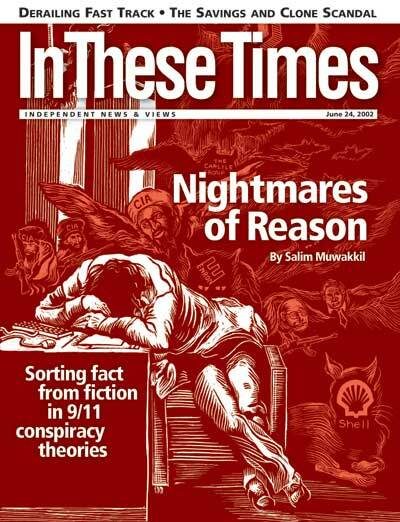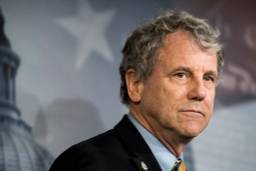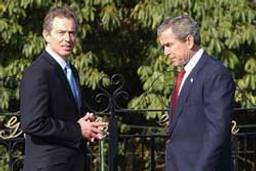Dublin, Ireland—It was a foregone conclusion heading into general elections on May 17 that Bertie Ahern, leader of Fianna Fail, the Republic of Ireland’s largest political party, would be returned as prime minister for the next four years. The real question for the pundits and poll watchers was whether Ahern and his party would win an outright majority, allowing them to govern without a coalition.
Fianna Fail won 81 seats and just over 41 percent of “first preference” votes in Ireland’s system of proportional representation, in which voters rank candidates for 166 seats. Those numbers saw them far outdistancing Fine Gael, their traditional political rival and challenger for power. Ahern ran a disciplined, “It’s the economy, stupid” campaign, taking advantage of a general feeling of improvement and prosperity among a large section of the voters, and a bounce from the fragile but enduring “success” of the Northern Ireland peace process. Ireland has experienced the highest growth rates in Western Europe in recent years and has cut unemployment rates in Northern Ireland dramatically, courtesy of multinational capital and large E.U. investments.
But increased prosperity has brought problems that Ahern’s tepid leadership has failed to resolve. With Fianna Fail occupying the center-right, a divided electorate went looking for alternatives in emerging parties that offered a more radical critique.
The most significant long-term development is Sinn Fein’s emergence in the Republic as a political force. The party held only one seat in the Dail, Ireland’s parliament, prior to the elections: By winning five this time, they displayed a remarkable capacity for turning a grassroots focus on local issues into votes. Martin McGuinness, Sinn Fein education minister in Northern Ireland, told a jubilant group of supporters in Tralee, “The political landscape has already changed in Northern Ireland, and now it is changing in the south. This is a decisive step forward for the party.”
Campaigning in central Dublin, Sinn Fein candidate Nicky Kehoe fell less than 100 votes short of winning a seat. While his literature emphasized a united future Ireland and elimination of Third World debt, voters at the door had different issues in mind. “I was a little afraid” of Sinn Fein’s association with the IRA, says Karen, a voter who declined to give her last name. “But if this guy can help me get a speed bump in my street to protect my kids, he has my vote.”
While all politics may be local, the dynamics that threaten to turn Ireland into an economically bifurcated country are national and international. “Ireland has become a two-tiered country,” Labour candidate Michael D. Higgins commented before heading out to canvass in Galway. “We are now a place where greed is the dominant ethos and the top 20 percent of the people have gotten rich while the underclass has grown dramatically.”
The quaint, postcard picture image of Ireland is gone for good, at least for those who live there—and many would say good riddance to a Catholic-dominated, insular and conservative culture. Ireland is more self-confident, more oriented toward Europe and less obsessed with Great Britain as the source of all of its failures. But crime and drug abuse have increased, the national health system is in steep decline, and housing prices have skyrocketed beyond the reach of the working class.
Despite having fallen just short of winning a majority of seats—Fianna Fail thus faces the potentially tricky task of securing a governing coalition—Ahern and his party are in firm control of the political process, and the opposition has fractured into a number of smaller contenders. The possibility exists for a Sinn Fein-Green Party alignment that could offer hope for those left out of Ireland’s newfound prosperity.
The Green Party, which won six seats in the election and showed surprising strength, has worked with Sinn Fein supporters for years at the local level. Morna Regan, a Dublin resident who gave her preference votes to the Greens and an independent candidate, commented dryly on election day near her polling station: “Look around you at the pollution and the traffic. There has to be an alternative to this.”
Fianna Fail won 81 seats and just over 41 percent of “first preference” votes in Ireland’s system of proportional representation, in which voters rank candidates for 166 seats. Those numbers saw them far outdistancing Fine Gael, their traditional political rival and challenger for power. Ahern ran a disciplined, “It’s the economy, stupid” campaign, taking advantage of a general feeling of improvement and prosperity among a large section of the voters, and a bounce from the fragile but enduring “success” of the Northern Ireland peace process. Ireland has experienced the highest growth rates in Western Europe in recent years and has cut unemployment rates in Northern Ireland dramatically, courtesy of multinational capital and large E.U. investments.
But increased prosperity has brought problems that Ahern’s tepid leadership has failed to resolve. With Fianna Fail occupying the center-right, a divided electorate went looking for alternatives in emerging parties that offered a more radical critique.
The most significant long-term development is Sinn Fein’s emergence in the Republic as a political force. The party held only one seat in the Dail, Ireland’s parliament, prior to the elections: By winning five this time, they displayed a remarkable capacity for turning a grassroots focus on local issues into votes. Martin McGuinness, Sinn Fein education minister in Northern Ireland, told a jubilant group of supporters in Tralee, “The political landscape has already changed in Northern Ireland, and now it is changing in the south. This is a decisive step forward for the party.”
Campaigning in central Dublin, Sinn Fein candidate Nicky Kehoe fell less than 100 votes short of winning a seat. While his literature emphasized a united future Ireland and elimination of Third World debt, voters at the door had different issues in mind. “I was a little afraid” of Sinn Fein’s association with the IRA, says Karen, a voter who declined to give her last name. “But if this guy can help me get a speed bump in my street to protect my kids, he has my vote.”
While all politics may be local, the dynamics that threaten to turn Ireland into an economically bifurcated country are national and international. “Ireland has become a two-tiered country,” Labour candidate Michael D. Higgins commented before heading out to canvass in Galway. “We are now a place where greed is the dominant ethos and the top 20 percent of the people have gotten rich while the underclass has grown dramatically.”
The quaint, postcard picture image of Ireland is gone for good, at least for those who live there—and many would say good riddance to a Catholic-dominated, insular and conservative culture. Ireland is more self-confident, more oriented toward Europe and less obsessed with Great Britain as the source of all of its failures. But crime and drug abuse have increased, the national health system is in steep decline, and housing prices have skyrocketed beyond the reach of the working class.
Despite having fallen just short of winning a majority of seats—Fianna Fail thus faces the potentially tricky task of securing a governing coalition—Ahern and his party are in firm control of the political process, and the opposition has fractured into a number of smaller contenders. The possibility exists for a Sinn Fein-Green Party alignment that could offer hope for those left out of Ireland’s newfound prosperity.
The Green Party, which won six seats in the election and showed surprising strength, has worked with Sinn Fein supporters for years at the local level. Morna Regan, a Dublin resident who gave her preference votes to the Greens and an independent candidate, commented dryly on election day near her polling station: “Look around you at the pollution and the traffic. There has to be an alternative to this.”







